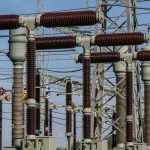Why Your Smoke Alarm Won’t Stop Beeping – Troubleshooting Tips
Has your smoke alarm ever started beeping unexpectedly? It’s not just an annoyance; it’s a loud reminder that something might be wrong. At Voltfix Electrical, we understand how crucial it is to address these beeps promptly to ensure the safety and peace of mind of your household. As experts in electrical solutions, we’re here to guide you through the common reasons behind these beeps and offer practical troubleshooting tips to resolve the issue swiftly.
Understanding Your Smoke Alarm
Types of Smoke Alarms
Smoke alarms come in several types, each designed to detect fires differently. The ionisation type is quicker at sensing fast, flaming fires. Photoelectric alarms excel in detecting smouldering fires, producing less smoke but more flames. Combination alarms provide comprehensive protection by combining both technologies. Knowing which type you have is crucial for understanding why it might be beeping.
How Smoke Alarms Work
Smoke alarms detect smoke using optical detectors or physical process changes. When smoke particles enter the unit, they disrupt the flow of ions or reflect light beams, triggering the alarm. This sensitivity is why they’re also prone to false alarms and beeping without apparent dangers.
Importance of Regular Maintenance
Maintaining your smoke alarm is vital to ensure its functionality. Regular checks and maintenance can prevent malfunctioning and increase the reliability of your alarms, ensuring they only alert you when there’s a genuine threat.
Common Reasons Why Smoke Alarms Beep
Low Battery
A low battery is one of the most frequent triggers for a smoke alarm’s persistent beeping. As the battery depletes, the alarm interprets this as a fault or malfunction, prompting it to emit a warning beep. This is the alarm’s way of alerting you to the urgency of replacing the battery to maintain continuous protection. It’s essential to act quickly when you hear this type of beep; replacing the battery not only stops the annoyance but also ensures that the smoke alarm remains functional and effective in case of a real fire emergency.
Dust and Debris
Dust, debris, and even small insects can accumulate inside the smoke alarm, particularly around the sensor chambers. This buildup can obstruct the sensors, leading to false alarms or continuous beeping, which might be mistaken for smoke detection. Regularly cleaning your smoke alarm is critical to prevent these interruptions. A simple maintenance routine, involving gentle cleaning of the alarm’s exterior and interior with the right tools, can significantly reduce the likelihood of such disturbances.
Humidity and Steam
In environments with high humidity or where steam is frequently produced, such as kitchens and bathrooms, smoke alarms may experience false triggers. Steam and moisture particles are often similar in size to smoke particles, which can confuse the smoke alarm into sounding off as if detecting smoke. This is why choosing the right type of smoke alarm for specific areas of your home, and positioning them appropriately, is crucial to avoid these unnecessary alarms.
Age of the Alarm
Smoke alarms are not designed to last indefinitely. The general recommendation is to replace smoke alarms every ten years. Over time, the components within the smoke alarm, including the sensors, can degrade or fail, leading to less efficient operation and increased instances of false alarms or unexplained beeping. Regularly updating your smoke alarms not only ensures they function optimally but also incorporates the latest technology for enhanced safety.
Step-by-Step Troubleshooting Guide
Checking and Replacing Batteries
Firstly, identify if the beeping is due to a low battery. If your smoke alarm uses replaceable batteries, open the compartment, remove the old battery, and insert a new one, ensuring it is correctly oriented and securely in place. After replacing the battery, observe if the beeping stops. This simple step can often resolve the issue and restore peace of mind.
Cleaning Your Smoke Alarm
To clean your smoke alarm, first ensure that it is switched off or disconnected from any power source. Using a vacuum cleaner with a soft brush attachment, gently remove dust and debris from around the exterior casing and the sensor area, being careful not to press too hard and damage the sensors. For a deeper clean, you can use a dry microfiber cloth to wipe the inside of the alarm if accessible.
Resetting Your Smoke Alarm
Most modern smoke alarms feature a ‘test’ or ‘reset’ button. Press this button to reset the alarm, which can help clear any errors that are causing the beeping. If the smoke alarm continues to beep after resetting, this might indicate a more serious issue, requiring further troubleshooting or professional assessment.
Testing the Smoke Alarm
After completing any maintenance or troubleshooting steps, it’s important to test the smoke alarm to ensure it is working correctly. Press the ‘test’ button on the unit; the alarm should sound if it is operational. If it doesn’t, recheck the battery and ensure all cleaning and resetting steps were performed correctly. Regular testing as part of your home safety routine is vital to ensure ongoing protection.
When to Call a Professional
Persistent Issues
If after all your troubleshooting efforts the smoke alarm continues to beep, it may indicate a more complex problem that can’t be resolved through simple fixes. Persistent beeping could be a sign of underlying electrical issues or a fault within the alarm system itself. In such cases, it’s prudent to consult a professional who can diagnose and resolve these deeper issues. They have the tools and expertise to thoroughly assess and effectively repair your smoke alarm, ensuring it functions reliably when you need it most.
Installation of New Smoke Alarms
Installing new smoke alarms can be more complex than it appears, especially in large homes or buildings with intricate layouts. A professional installer can ensure that smoke alarms are not only placed correctly but are also the best fit for each location. They understand the nuances of alarm coverage and can help avoid common installation mistakes, such as placing alarms too close to bathrooms or kitchens where steam and humidity can trigger false alarms.
Regular Maintenance Checks
Regular maintenance checks by a professional are crucial for the longevity and efficacy of your smoke alarms. These checks include detailed inspections, cleaning of sensors, battery checks and replacements, and testing the alarms’ responsiveness to smoke. Scheduled professional maintenance helps in early detection of potential problems that could impair the functionality of your smoke alarms, ensuring they remain in optimal working condition.
Preventative Measures
Regular Maintenance Schedule
To minimise the likelihood of unexpected beeping and ensure the effectiveness of your smoke alarms, establish a regular maintenance schedule. This should include routine battery replacements, at least annually, and regular alarm testing, which can be done monthly. Such proactive maintenance not only extends the life of your smoke alarms but also enhances your home’s safety, ensuring that your alarms are always ready to alert you in case of fire.
Choosing the Right Smoke Alarm
Selecting the right type of smoke alarm for various areas of your home is crucial in minimising false alarms and maximising detection capabilities. Photoelectric alarms, for example, are better suited for areas close to kitchens and bathrooms as they are less likely to be triggered by steam. Conversely, ionisation alarms might be more appropriate in areas where quicker detection of flaming fires is needed. Understanding the strengths and limitations of each type of alarm will guide you in placing them where they will be most effective.
Educational Tips
Educating all household members on the significance of the smoke alarm beeping sounds is essential. Everyone in the home should know how to react if the alarm sounds — whether it’s a test, a false alarm, or a real fire. Teaching them about the different types of beeps and the appropriate steps to take can help prevent panic and ensure a swift, organised response in case of an emergency. Regular drills and discussions about fire safety can reinforce this knowledge, keeping safety a priority for everyone in the household.
Conclusion
Today, we’ve explored several reasons why your smoke alarm might beep and provided a step-by-step guide to address these issues. Remember, addressing these beeps is not just about silencing an annoyance but ensuring your safety. At Voltfix Electrical, we pride ourselves on offering comprehensive solutions and professional advice for all your electrical needs. If your smoke alarm issues persist or you need professional installation or maintenance, don’t hesitate to contact Voltfix Electrical. Let us help you ensure your home is safe and your alarms are in top condition.





